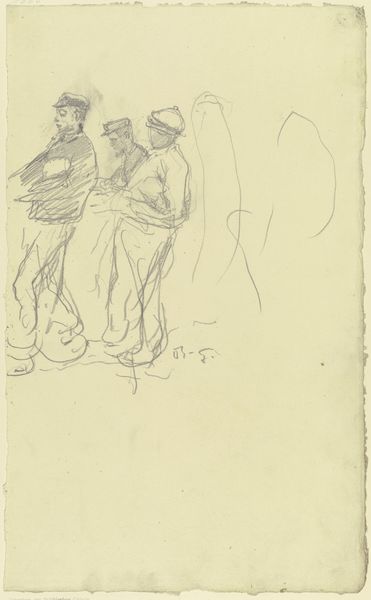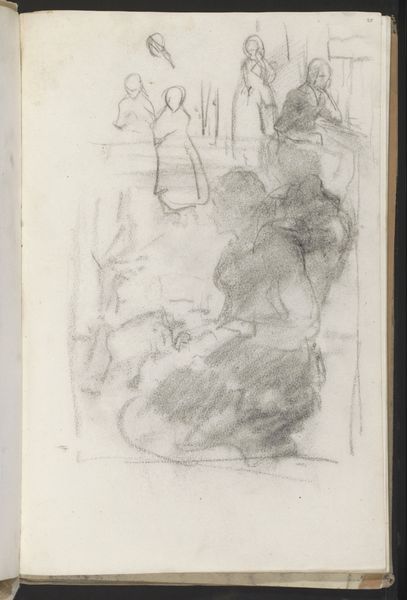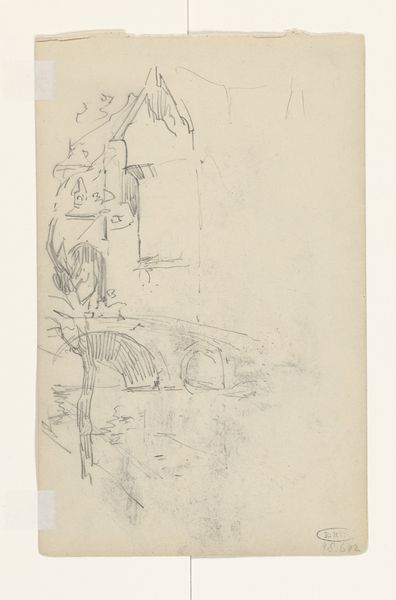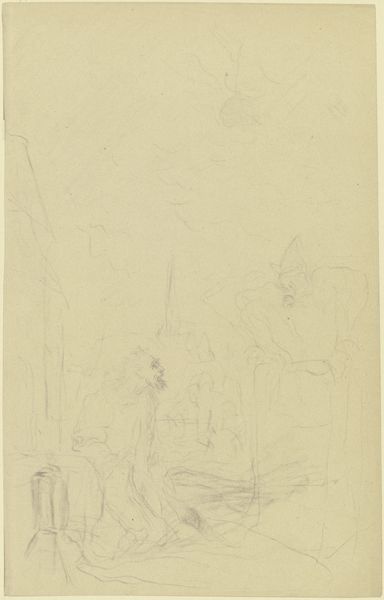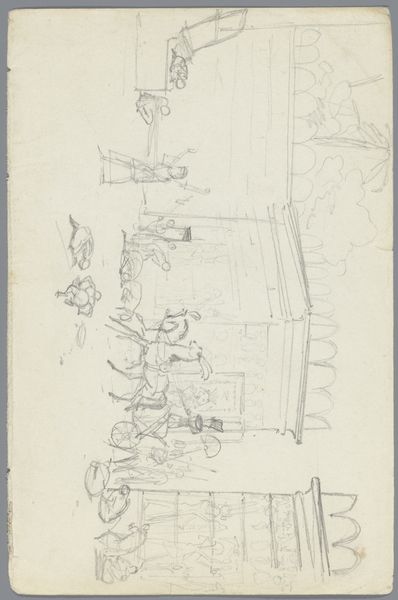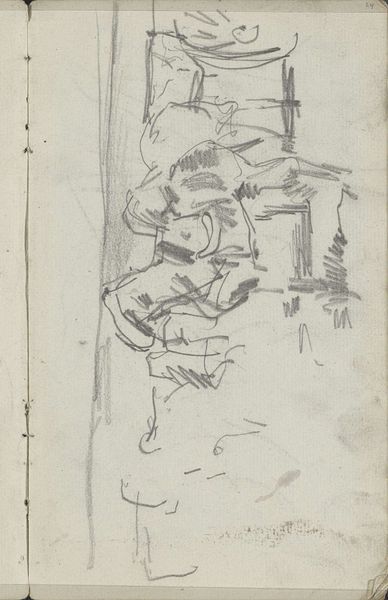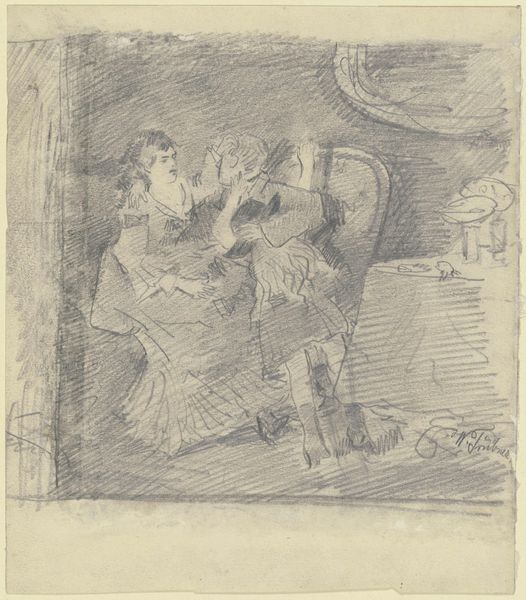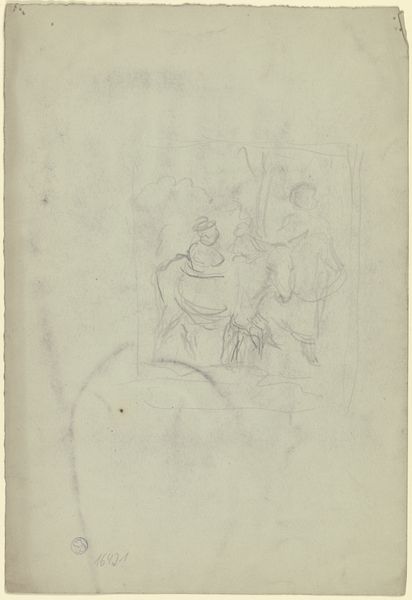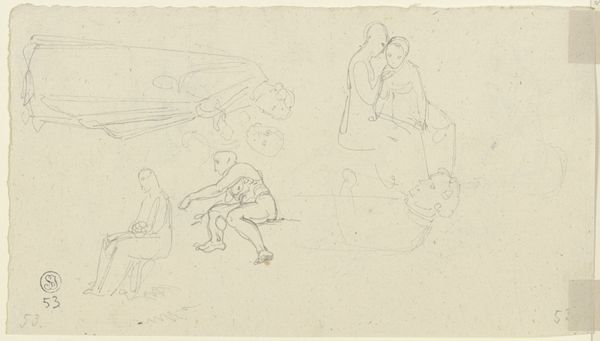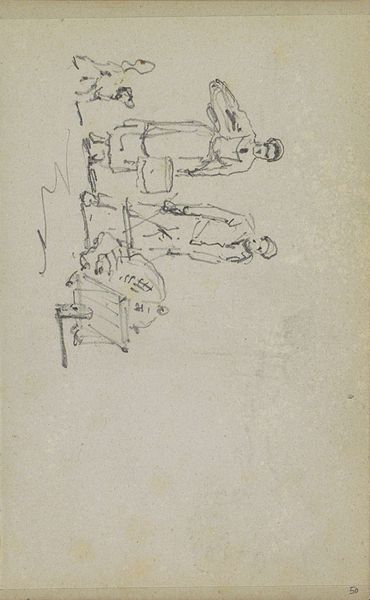
Copyright: Public Domain
Editor: This is Rudolf Gudden's pencil and graphite drawing, "Workers from the Great Edam Spinning Mill," from around 1894. It's quite sparse; just a few figures sketched onto the paper. What significance do you find in its composition? Curator: Notice how Gudden places the standing figure almost floating above the others. It subtly elevates his status, perhaps a supervisor, or even an idealized representation of labor itself. Observe how each figure's activity is oriented towards a implied communal function. Does it remind you of traditional images of labour? Editor: I can see that now, yes. The positioning almost echoes a religious altarpiece with the standing figure as a saint, watching over the toilers below, even with this figure standing upon clogs to appear higher. It seems less an observation and more symbolic. Curator: Exactly! Gudden utilizes established visual tropes to imbue the everyday with greater meaning. Consider the woman at the spinning wheel, and man above. What do their placement mean to the entire drawing? Editor: It implies how important work is to society and what people identify as valuable at this time, what the image represents for people during this era of labour, in factories. It seems there is more symbolic weight given to labourers overall than previously considered. I had never noticed that, before. Curator: That’s precisely the power of imagery. It continues to hold memories across time. Every careful line can convey immense narrative potential when considered under closer study. Editor: Thank you. This perspective changes how I view these seemingly simple figures now. Curator: Indeed, seeing the symbolic links connects us to the past in meaningful ways.
Comments
No comments
Be the first to comment and join the conversation on the ultimate creative platform.
